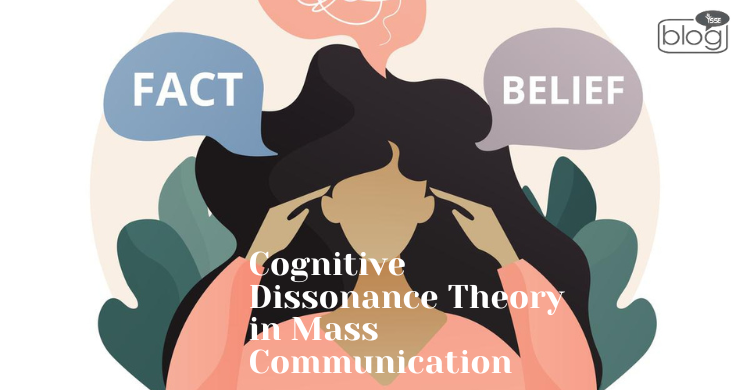Cognitive dissonance, a psychological concept originated by Leon Festinger in 1957 as a phenomenon wherein an individual experiences stress due to inconsistency in cognitions. This theory appears most appropriate within the context of mass communication, where receivers often encounter multiple and often conflicting messages. In today’s social media-dominated world, media use also expresses such discomfort, and in selective exposure individuals tend to seek or lean towards those sources and content that support their beliefs. Cognitive dissonance also underpins things like echo chambers and media polarisation, as well as advertising approaches, which is why it is foundational to the comprehension of the audience and their actions.
Function in mass media and communication:
- Selective Exposure: Cognitive dissonance can help explain the pattern in which people partake in media consumption that we predicted at the beginning of the paper. For instance, a person who aligned with a certain political leaning is more likely to patronize media providers that give a positive spin to his or her political stance, and the opposite views. This may help foster the formation of echo chambers, that is, environments wherein heterodoxus thoughts are omitted.
- Impact on Perception: The works done on two-step flow model when audiences receive media messages or rather the media stimuli they may possibly alter or even eliminate information to another which is in agreement with the perceptual beliefs held. For instance, climate change denial systems who might experience high levels of this cognitive dissonance might want to downplay any information presented to the media.
- Influence on Media Credibility: A type of media communication where a recipient receives a message continuously it may begin to regard the source of the media as either pro-claiming or fake. This can work to erode citizens’ trust in the media especially during times when the country is so polarized politically.
Application in persuasion and advertising
Cognitive dissonance is quite common and is used or exploited by Advertisers and marketers in their products marketing. For instance, when companies use messages that set up inconsistencies, they make the people feel uncomfortable; such as are you a healthy person and still you are doing this? They then proceed and present their product as solving the problem; therefore the consumer should change their ways and balance it.
To navigate cognitive dissonance effectively
Develop Media Literacy: This includes reviewing messages, being able to dissect them and check their credibility to identify biases on mediated contents.
Diversify Media Consumption: Interacting with different opinions increases the possibility of avoiding mental silos and gaining better insights about societal phenomena.
Encourage Open Dialogue: Debate and discourse about discrepant media, perhaps, help people better generate empathy and encourage healthy rationale.
Limitations
Cognitive dissonance however has its shortcomings for mass communication. They include differences in tolerance for the amount of dissonance that can be comfortably experienced or for the degree of inconstancy that might be acceptable; cultural differences in consistency preferences; and assessment problems caused by the fact that discomfort is a poor and an unreliable measure. Additionally, selective exposure also restricts the media’s ability to influence the person’s belief, and not all of them create cognitive inconsistency. The theory lacks consideration of affective and communal components which often limit its ability to deal with tremendous issues.
Media is analyzed in relation to our thinking and actions with reference to cognitive dissonance. It describes how the audience consumes content, promoting its own beliefs, while avoiding content that contradicts those beliefs. Media literacy and productive talk lessen its impact, fostering thinking, choosing, audience, and talking.
To read more blogs like this, click here.
Writer
Most Sirajum Munira
Intern, Content Writing Department
YSSE

